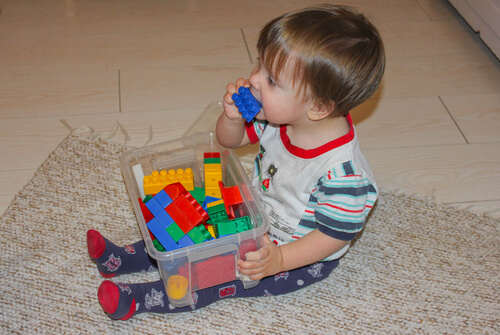67% of visitors answered YES
Is your child showing signs of "oral stimming"?
Can’t tell
Feb 7, 2022 Do you have a child that chews on everything? For some children with sensory processing disorder and autism, oral sensitivities may become an issue.
Oral sensitivities are also known as oral stimming. A child ‘stims’ as a way of regulating emotions or when he or she is under or overstimulated with their environment.
For those who need oral stimulation, managing chewing behavior can be challenging. Children often feel compelled to chew on items they are not supposed to chew on. This behavior cannot be stopped, but with healthy alternatives, it can be managed.
Can’t tell
A child who orally stims is often found with things in their mouth. You will see him or her taste-testing inanimate objects. Like a baby under a year of age, exploring objects with their mouth to learn about the objects. But this type of stimming behavior doesn’t stop with taste-testing. It develops further into chewing behavior.
Children may chew on inanimate objects like:

As a parent with a child who is a “chewer,” this is by far the most frustrating sensory issue because it can become dangerous. Since everything is a potential chewable object, constant supervision is needed because of the following dangers.
This is a serious issue for parents with children who need to chew on things! So what do you do for a child who needs to chew?
First, know that you can’t stop the chewing behavior. Chewing is a way to gain stimulation or to calm emotions. A child who chews feels compelled to chew on things. In other words, they have to!
Second, chewing behavior is manageable and safety measures can be taken to reduce health issues, teeth damage, and potential chocking.
Can’t tell
Many times, objects around the house are chewed on and it’s not always noticeable. Over time, the object may become damaged from excessive chewing. My son recently chewed apart two pages of a board book. I call this “sneaky chewing.” It’s chewing that happens without my knowledge and by the time I find out, the object being chewed on is beyond repair.
This “sneaky chewing” will happen because my son knows he shouldn’t chew on objects like books, but yet he can’t help it. By the time I find the book and cardboard pieces around the house, the book is destroyed.
Can’t tell
To provide a healthy oral sensory sensation, offer plenty of chewy snacks. This will supply the chewing stimuli a child is craving. I’ve noticed my son is interested more in foods that are crunchy and chewy. Two of my son’s favorite snacks for a healthy chewing alternative are veggie chips and dried cereal.
Here are some crunchy food alternatives to try:
Chewable jewelry comes in the form of bracelets, necklaces and even pencil toppers to help children manage oral sensory needs. These types of chewable objects offer a safe, durable, and accessible alternative to chewing on everything a child shouldn’t chew on.

They come in a variety of designs, including military dog tags and sharks’ teeth! Chewable jewelry offers a safe alternative for chewing inanimate objects and can be worn every day.
Can’t tell
Since oral stimming behavior like chewing cannot be stopped, it’s best to manage it with redirection. When your child begins to chew on his/her shirt, find something else that’s acceptable to chew on like chewable jewelry. Then redirect their chewing to the chewable jewelry.
Every time my son begins to chew on his shirt, I immediately grab his chewable necklace. I then explain to him that “shirts are not for chewing” and hand him the chewable necklace. The redirection to a more positive outlet of chewing works every time!
Since oral stimming behavior like chewing cannot be stopped, it’s best to manage it with redirection.
Using redirection lets your child know that chewing certain objects is not ok, but when the chewing is done with chewable jewelry the oral stimming behavior is acceptable. This lets a child be themselves while eliminating wear and tear on non-chewable objects.
Another way to manage chewing behavior is by offering drinks with a straw. The smaller the straw or the thicker the drink, the better. Although this doesn’t offer a chewing sensation, it does fulfill the oral sensory need many children crave.

Milk or juice boxes are great for added resistance because of the small straw design. Another option I use instead of juice boxes is smoothies. Fruit and veggie smoothies are a healthy substitute to juice if your child prefers smoothies. Just make sure your child drinks the smoothie with a straw!
Can’t tell
Chewing is a form of oral stimming that’s frustrating to deal with as a parent. I spend much of my time telling my son “don’t chew on that!” I know he can’t help it and it’s a sensory need that has to be met, but everything that’s not meant to be chewed ends up in his mouth. Because of this, everything usually gets destroyed. I’ve also had many close calls with chocking on objects like rocks.
Oral stimming is not something that can be stopped. However, it can be managed along with taking certain precautions for your child to be safe. For my own son, I’ve found the best way to manage chewing is by using a combination of redirection and chewable jewelry!